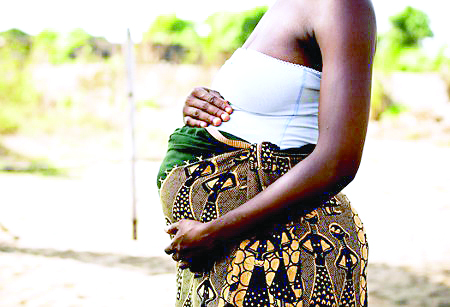Nairobi leads counties with high teenage pregnancies

Four counties—Nairobi, Kakamega, Narok and Bungoma—had the highest reported cases of teenage pregnancies in 2024, according to a recent report.
Out of the 241,228 teenage pregnancies reported countrywide last year, Nairobi had the highest (six per cent), followed by Kakamega (4.8 per cent), while Narok and Bungoma accounted for 4.4 per cent.
The Kenya National Bureau of Statistics (KNBS) data however showed that the number of teenagers (aged 10-14) who fell pregnant decreased by 14.4 per cent to 10,126 in 2024.
Similarly, the number of pregnant adolescents (aged 15-19) decreased by 4.3 per cent to 231,102 in 2024.
KNBS reported a decrease in the overall number of births registered from 1.2 million in 2023 to 1.1 million in 2024, with 99.0 per cent occurring in health facilities.
On the other hand, the number of registered deaths increased from 205,731 in 2023 to 206,417 in 2024.
“The birth registration completeness rate declined from 76.6 per cent in 2023 to 70.3 per cent in 2024. Similarly, the death registration completeness rate declined from 45.2 per cent in 2023 to 44.8 per cent in 2024,” the economic survey reported.
The data agency said that the uptake of contraceptive methods increased in 2024, except for Pills Progestin and Sterilisation Vasectomy by new clients.
For birth control, family planning injections were the most popular method of contraception, with 3.3 million clients, followed by implant insertions, which had the highest number of new clients at 713,800 in the period under review.
Hospital deliveries
Notably, the number of men who underwent vasectomy decreased further from 389 in 2023 to 380 in 2024.
KNBS reported that the number of deliveries in health facilities declined by 3.2 per cent to 1.2 million last year, in all the modes of delivery except caesarean section, which recorded a 0.6 per cent increase to 220,505 deliveries in 2024.
The Economic Survey report also indicated that the total number of operational health facilities increased by 6.1 per cent to 15,984 in 2024, with the number of hospital beds and cots also increasing by 15.5 per cent and 9.6 per cent to 115,786 and 11,215, respectively, in 2024.
KNBS clarified that the increase in health facilities was mainly attributed to the number of level 3 health facilities, which rose by 611 facilities.
Kenya Medical Training College () registered an increase in middle-level medical students which hit 9.3 per cent to 29,326 in the 2023/24 academic year.
However, in the same period, the number of middle-level medical graduates declined by 6.8 per cent to 21,147.
At the university level, the number of students enrolled in health sciences increased by 5.7 per cent to 33,110 in the 2024/25 academic year, with medicine and surgery, and nursing degrees getting the highest enrolment of undergraduate students at 8,034 and 6,552 students, respectively.
“Male students accounted for 54.3 per cent of the total undergraduate and postgraduate students in the 2024/25 academic year,” the economic survey data indicated.
Despite health being a devolved function national government and the counties will have spent almost similar amount of money as the 2024/25 financial year comes to a close.
“The national government expenditure on health services is expected to grow by 13.4 per cent to Sh122 billion. Over the same period, the County Government expenditure on health services is expected to grow by 16.8 per cent to Sh123.7 billion,” KNBS data revealed.
In the 2024/25 financial year, the recurrent expenditure on health services by county governments is expected to increase by 15 per cent to Sh105.5 billion, while development expenditure will climb by 27.9 per cent to Sh18.21 billion.
“The share (on the two levels of governments) of expenditure on health was 21.6 per cent in 2023/24 and is expected to increase to 22.4 per cent in 2024/25. The ratio of National Government expenditure on health to total National Government expenditure is expected to rise from 3.3 per cent in 2023/24 to 3.5 per cent in 2024/25,” KNBS added.
Further, the KNBS report showed that the outpatient disease burden in health facilities decreased by 24.6 per cent to 66.2 million
Respiratory diseases and malaria were the most prevalent diseases, accounting for 30.2 per cent and 5.7 per cent of the total disease cases reported in health facilities, respectively.












